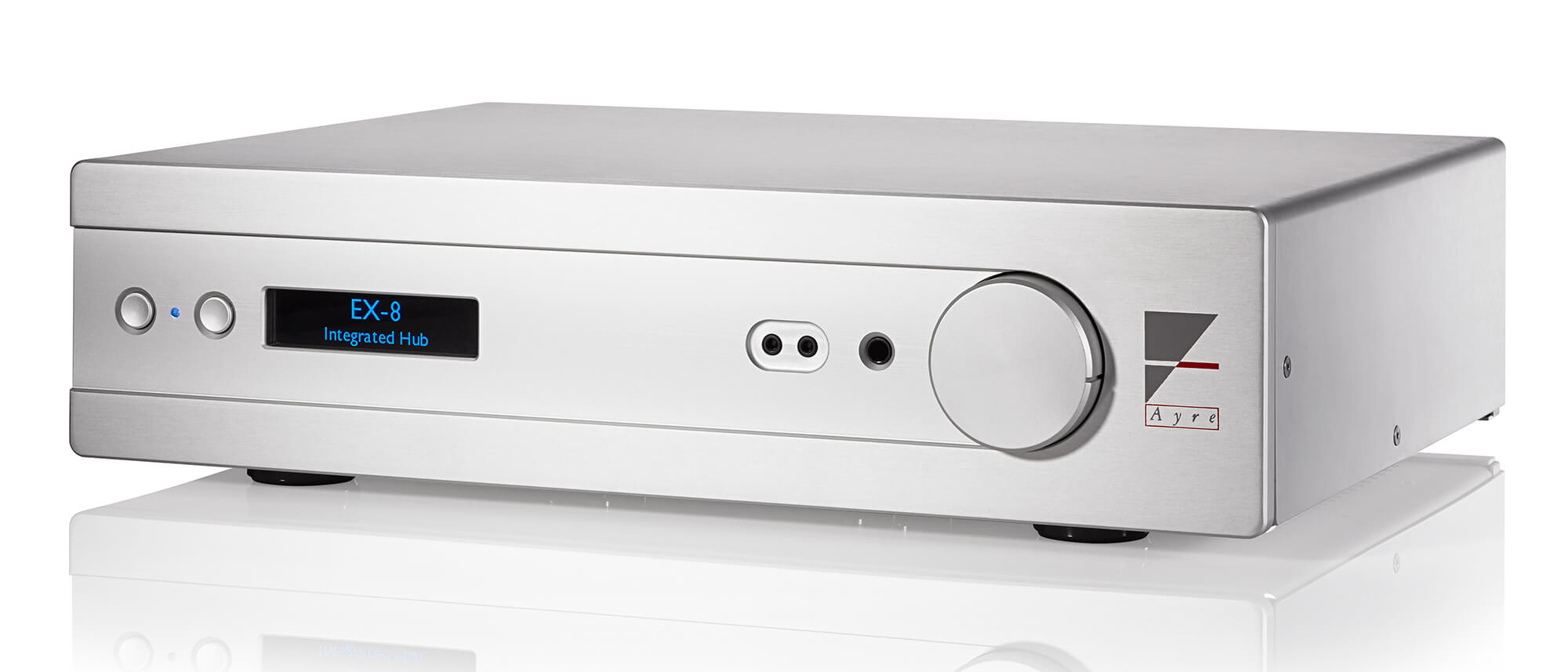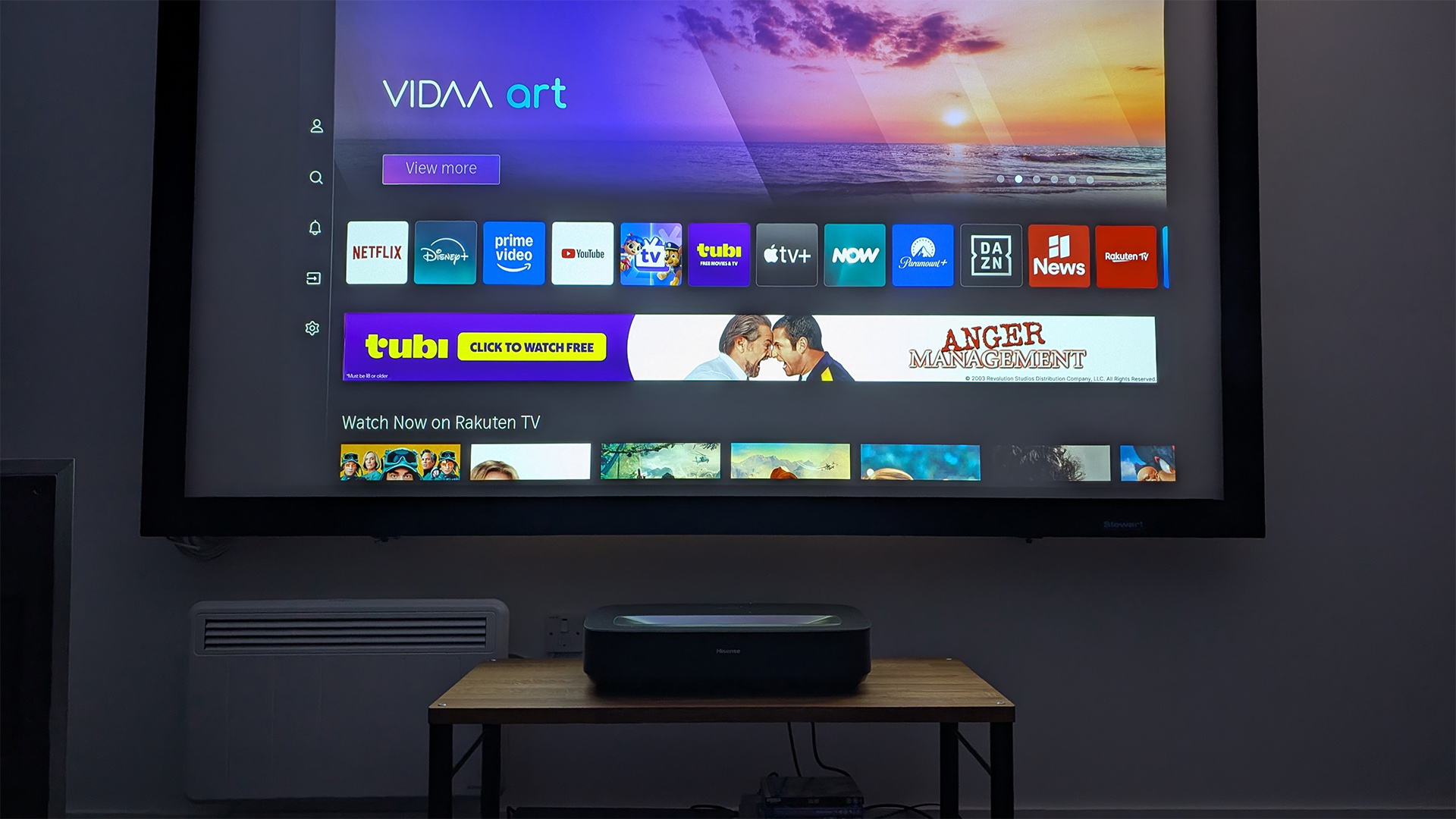What Hi-Fi? Verdict
With its interconnectedness, easy operability, excellent sound quality and attractive exterior, it's worth checking out Ayre Acoustics' EX-8, even if it has some solid competition at its price point.
Pros
- +
Looks and sounds great
- +
Upgradeable
- +
Roon-ready
Cons
- -
Balanced speaker output
- -
No AirPlay or Bluetooth support
Why you can trust What Hi-Fi?
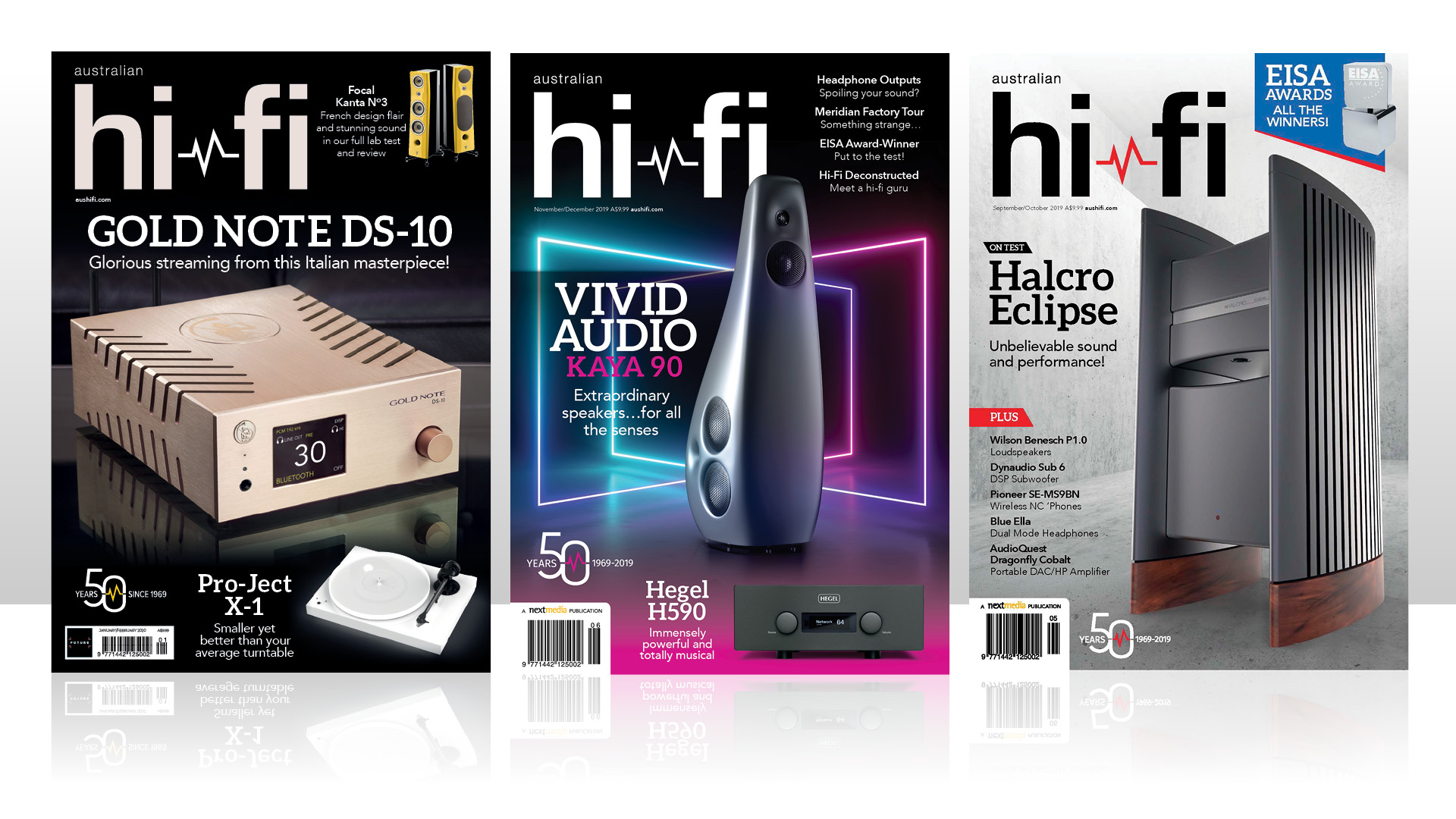
This review and test originally appeared in Australian Hi-Fi magazine, one of What Hi-Fi?’s sister titles from Down Under. Click here for more information about Australian Hi-Fi, including digital editions and details on how to subscribe.
Ayre Acoustics says its EX-8 is an “Integrated Hub”.
I know. I too wondered what an ‘integrated hub’ might be, having never previously heard of such a component. I guess that the problem is that now that there are so many different ways to store and deliver music that hi-fi manufacturers are not only having to make sure the components they sell can accommodate all those different ways, but also have to come up with simple ways of telling customers that their products are equipped to handle all these different ways… as well as give them an idea of what type of amplification might also be built in.
Obviously, Ayre Acoustics’ attempt to do this contains the words ‘Integrated’ and ‘Hub.’ Presumably, we’re supposed to infer that it’s not only an integrated amplifier, but also a ‘hub’ for all your sources. This isn’t a bad stab at a description, but whether it will fly with the hi-fi industry – and with audiophiles – has yet to be seen.
Equipment
The degree to which the Ayre EX-8 can fulfil its advertised role as a ‘hub’ depends to a large extent on the buyer, since three different versions of it are available. The ‘base’ version, which retails for £5,750 ($5,950 / AU$11,500), gives you only three analogue inputs: two unbalanced (via RCA) and one balanced (via XLR).
I suspect that most audiophiles would find that too few inputs to be truly useful. A couple more inputs would have made for a more practical proposition.
The next step up is to option in digital inputs, which Ayre rather confusingly calls a ‘Digital Base’ option, which brings the retail price up to £6,750 ($6,950, AU$12,650). But for this, you get only a coaxial digital input, an optical digital input and an AES/EBU input. In order make the EX-8 a real ‘hub’ you have to go the whole hog and go for the ‘Full’ option, which adds Ethernet and USB and which brings the retail price up to £7,750 ($7,950, AU$13,500).
I would have paid even more for a ‘Wireless’ module that added Wi-Fi, Airplay and Bluetooth, but Ayre doesn’t offer one (at least it didn’t at the time of writing). What it does offer is a USB/Wi-Fi adaptor that plugs into one of the two USB sockets on the rear and enables you to connect to your home network wirelessly, rather than via Ethernet. This USB/Wi-Fi ‘dongle’ is usually included, but for some reason it wasn’t with mine… perhaps it’s in a previous reviewer’s pocket, so I had to stick with wired Ethernet.
One advantage of this ‘option’ approach is that according to Ayre, all the options are on separate modules – in fact it claims that everything in the EX-8 is modular, including the headphone amplifier, the output amplifier and even the volume control circuitry. This means that, according to Ryan Berry, President of Ayre, almost everything is upgradeable. "This way we make it easy for our customers to keep up with formats or add new technologies we discover with a simple board swap," he says.
As you can see, the Ayre EX-8 is rather spartan, with only a smallish display, a largish volume knob, two normal-sized push-buttons and a pair of headphone sockets occupying the space. (When I say ‘a pair’ you might be wondering why there are three sockets. Two are balanced 3.5mm outputs, the other is a standard 6.35mm unbalanced output.) The EX-8 is also a fairly small component, measuring 440×330×100mm (WDH) and fairly light (11kg), even when optioned-up to the gills. But I think Ayre’s design approach looks very elegant, something you could proudly have out on top of a credenza or such-like for all visitors to admire.
The rear panel has all the inputs and outputs required, but there are two notable omissions. Firstly, Ayre does not identify which speaker terminal is the right channel or which is the left, leaving you to work this out yourself. Secondly, it labels its speaker terminals with big, black (+) and (–) markings but does not include any warning that these outputs are in fact balanced, so the (–) terminals are not at ground potential, which means if you connect either to ground (possibly via a powered subwoofer), you might damage the amplifier. This lack of a warning is a serious oversight. (This last bit, about the (–) terminal is mentioned in the Owner’s Manual, but who reads them?)
I was not surprised to find in the Owner’s Manual (yes, I did read it, my previous comment was a joke) the advice that "Due to the manufacturing processes used for the wires, capacitors and circuit-board materials, a break-in period is required for the amplifier to reach its full sonic potential," because most manufacturers include similar statements. I was equally not surprised to find that Ayre recommends that the break-in period should be "around 100 to 500 hours for the amplifier to reach its full sonic potential" because many other manufacturers also recommend similar break-in timeframes.
But what really, really surprised me was Ayre’s next statement, that "each input uses a different physical path on the input circuit board, therefore a separate break-in period is required for each input". Really? So putting that into context, a fully-optioned Ayre EX-8 has ten inputs, so if I proceeded on the basis of caution and allocated the maximum break-in time for each input, I’d have to use the Ayre EX-8 for 5,000 hours before it was performing as its manufacturer intended in order that I could review it properly. That’s a bit over six months of continuous operation! So, since I wasn’t able to have the Ayre EX-8 loaner unit for nearly that long, you’ll appreciate that I was not able to ‘break-in’ all the inputs I used.
Ayre also includes a set of wooden (Myrtle) blocks that it recommends you place underneath the EX-8 to improve its sound quality. While they may very well do that, I suspect an ulterior motive, which is to make sure there’s plenty of airflow underneath the amplifier, because without it the amplifier will get very hot indeed – my infra-red thermometer measured it at more than 50°C, and that was in an air-conditioned listening room following a not-overly-loud reviewing session. (I was, however, running the EX-8 24/7 in order to try to rack up the required break-in hours.)
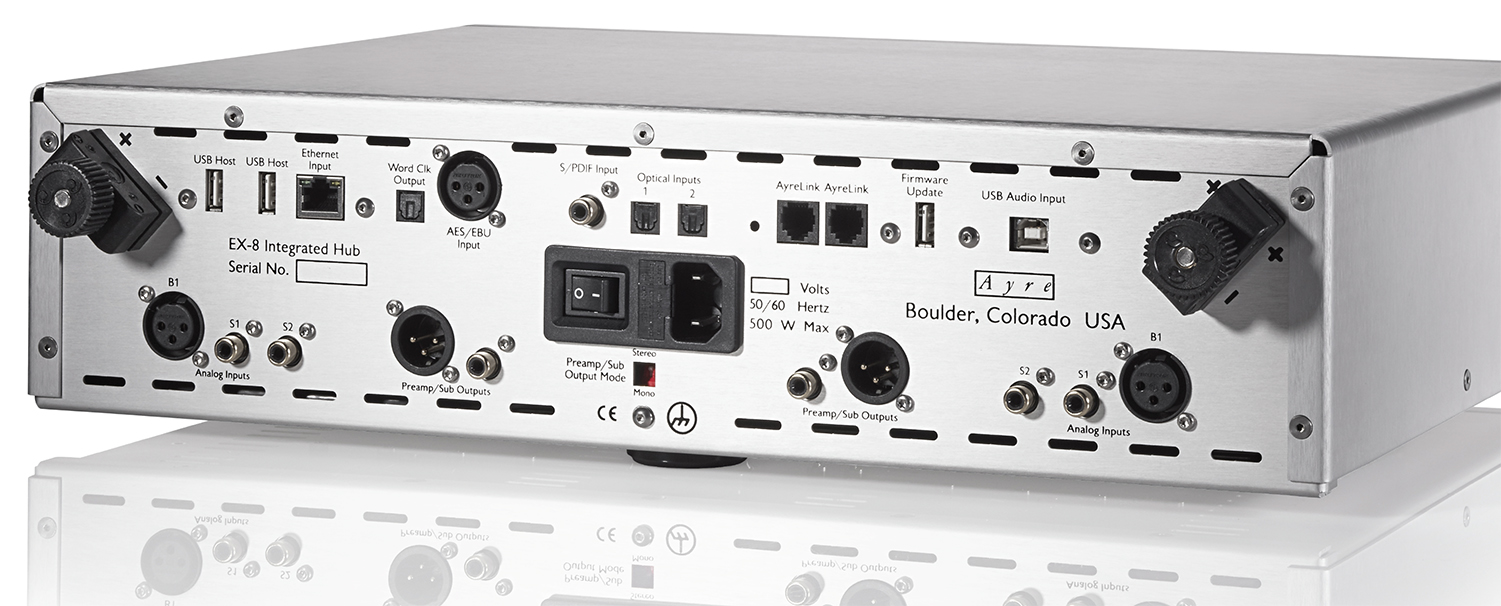
Listening
After I worked out which speaker terminals were left and which were right (I had initially guessed wrong, so I had to re-wire) it was all plain sailing. Ayre’s menu system is so intuitive that you probably won’t need to use the Owner’s Manual, unless it’s to set up the wi-fi (pages 29 to 33) or work out how to make inputs ‘invisible’, or adjust display time-out times or install firmware updates via USB, or arrange pass-through options, or enable video sync. This applies to controlling the EX-8 via the front panel, using the supplied infra-red remote control or via the M-Connect app, though you will have to switch between them for some operations.
Sound quality was clean and dynamic, and there was more than enough punch to the sound even with fairly inefficient speakers, so I can’t see you needing any more power than the Ayre EX-8 can deliver if you have an otherwise well-curated system.
Listening to the classic opener Doctor My Eyes, from Jackson Browne’s self-titled debut album, the Ayre delivered the full complexity of the contrasting bass lines from bass guitar and piano plus the fabulous percussion (full kit n’ congas) with unerring precision, keeping the low frequency sounds completely separate. You can also hear the finger strikes on the congas very clearly, and even on the fastest of the bass guitar riffs you can clearly hear the attack and the decay… and there’s no bleeding of one note into another.
Midrange was also superb. Listening to Browne’s Tender is the Night (I don’t know if he borrowed the title from F. Scott Fitzgerald’s novel of the same name, or from its original source, the John Keats poem Ode to a Nightingale) not only was Browne’s voice rendered accurately, but also the sound of the lead guitar and organ. You can hear the ‘studio’ sound of the day, but it’s very natural, with mostly only a little echo added… an effect which is also made clearly audible by the clarity of the Ayre EX-8’s sonic delivery.
I stayed with the same artist to test out the Ayre EX-8’s high-frequency performance, using Browne’s track Lawyers in Love (again from his album of the same name). This has some insane super high-frequency action (is it a synth pretending to be a theremin?) along with great cymbal sound and the Ayre again delivered it all beautifully. And, of course, the superb bass and drum sound Browne’s engineers manage to deliver on all his early albums is also clearly in evidence. (But do take the time to listen carefully to the lyric of this track… it’s a doozy.)
Final verdict
The fact that the Ayre EX-8 does not have Bluetooth and Airplay should not really worry you, but if it does, there are easy ways to enable this (ask your hi-fi dealer), so I don’t really lament their lack. Likewise with MQA (Master Quality Authenticated), even though Ayre could easily add this at any time (in fact, probably a good idea to check if it has been added by the time you’re reading this review).
But I do recommend you listen to the Ayre EX-8, because although its price puts it on a shelf where it has lots of serious and well-credentialed competitors, its interconnectedness, easy operability, excellent sound quality and attractive exterior make it worthy of your consideration.
Lab test results
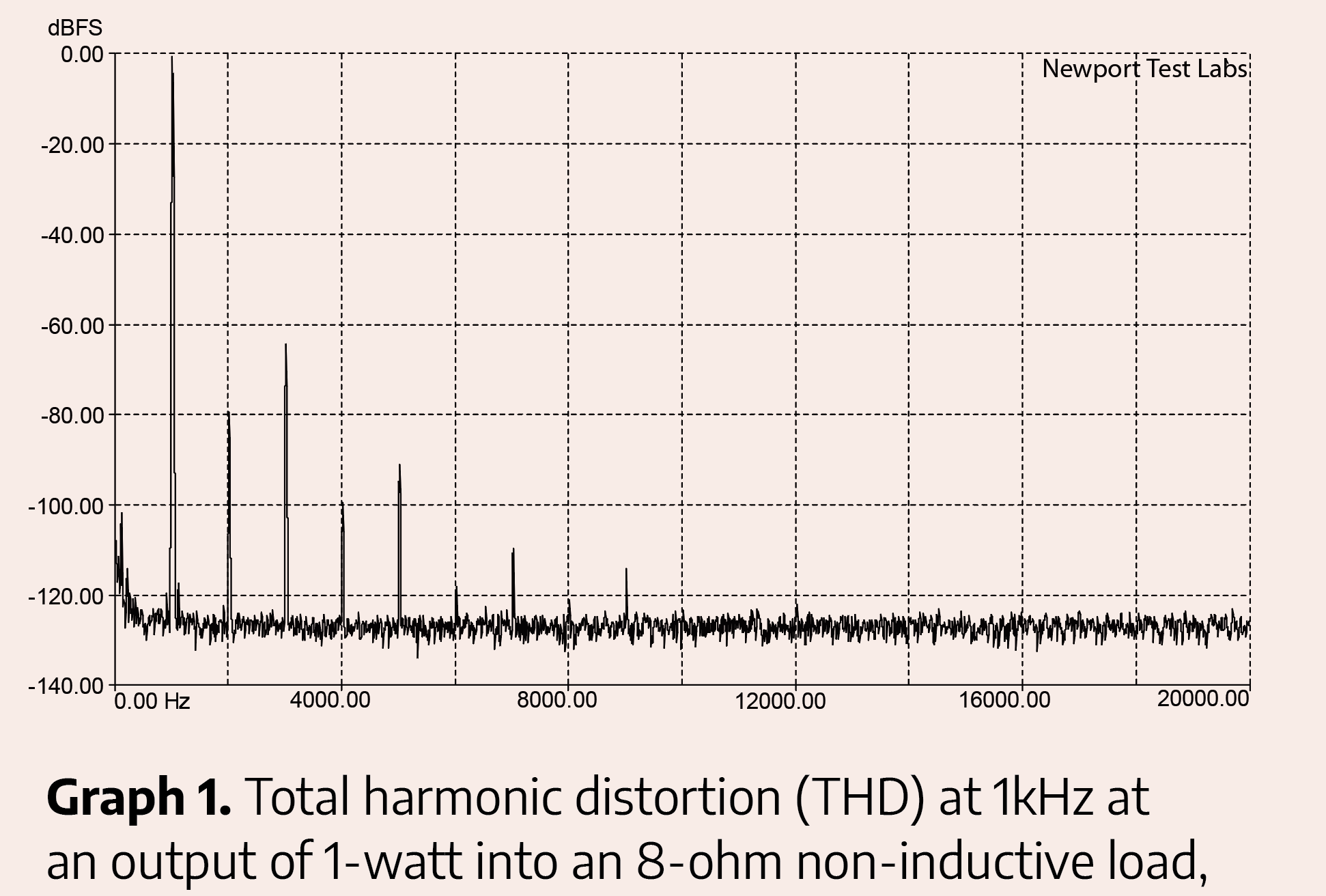
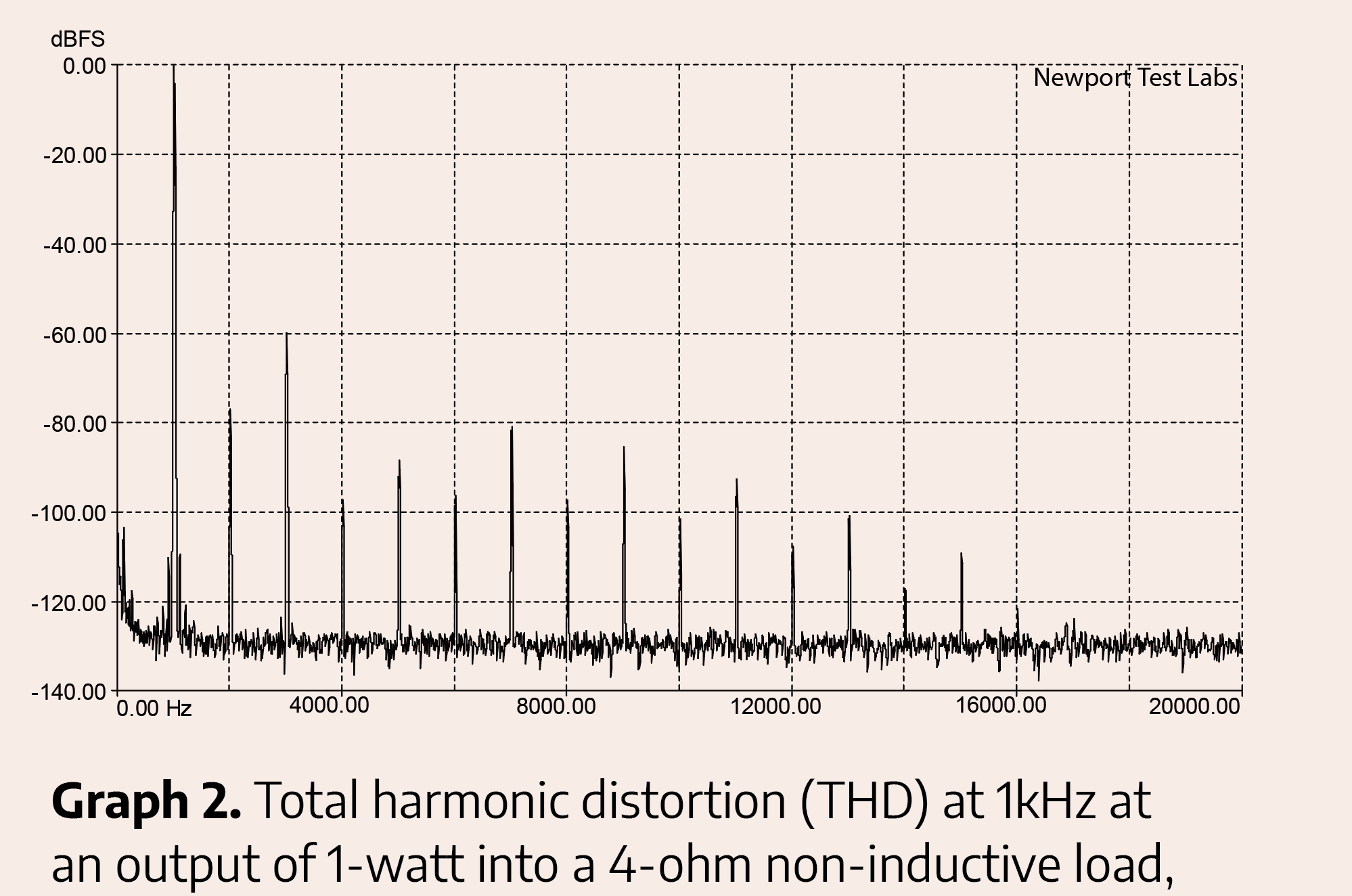
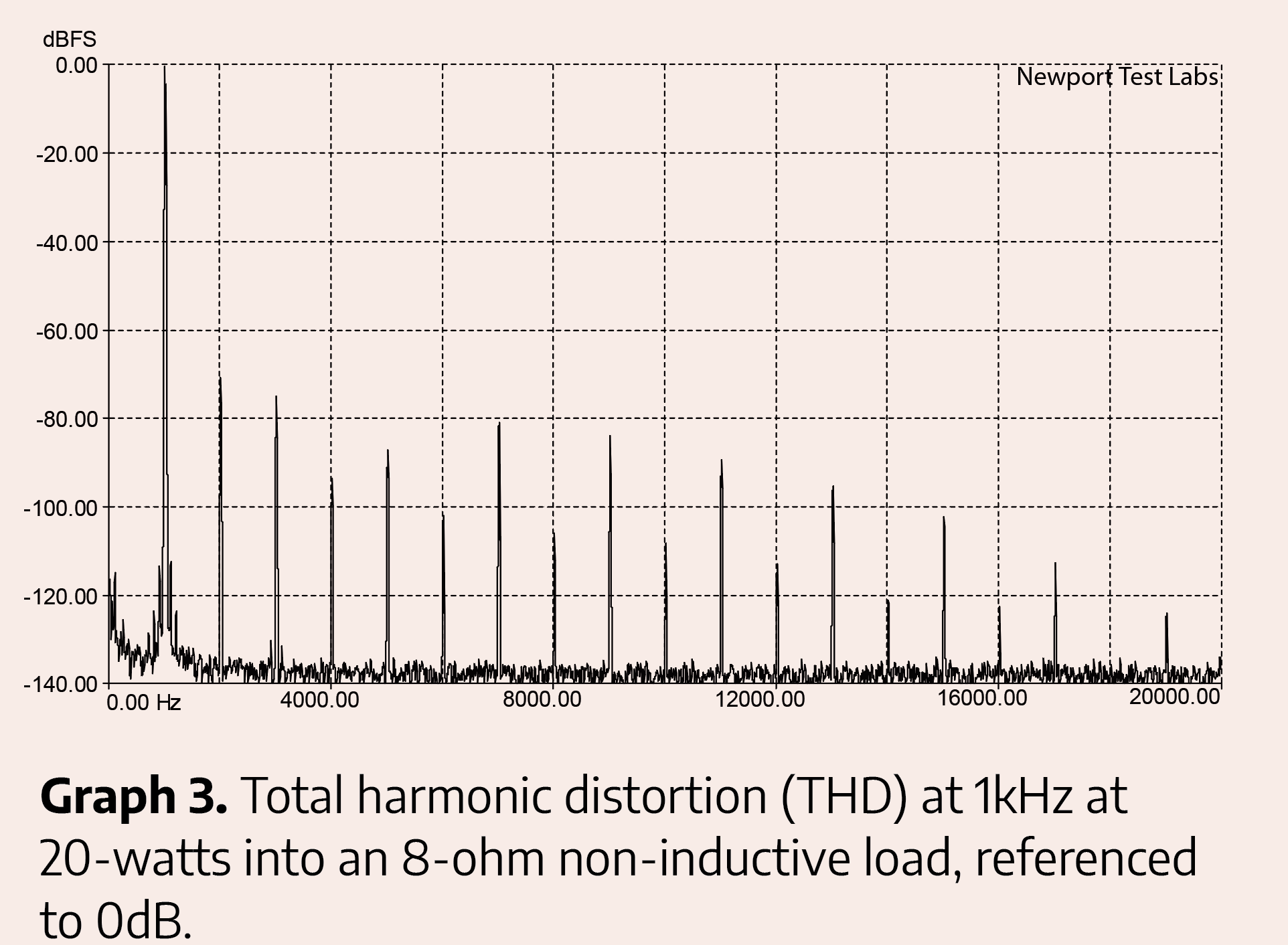
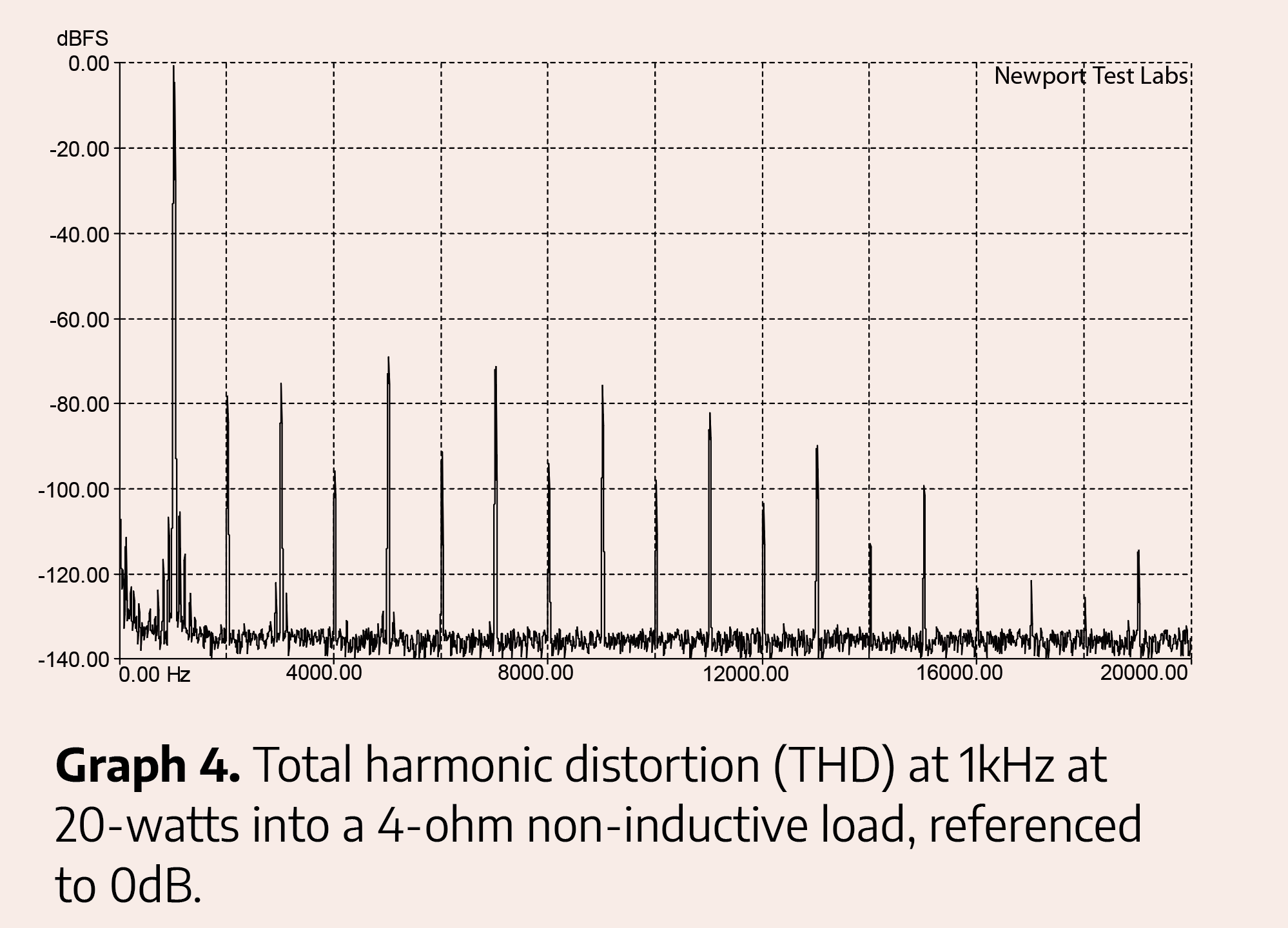
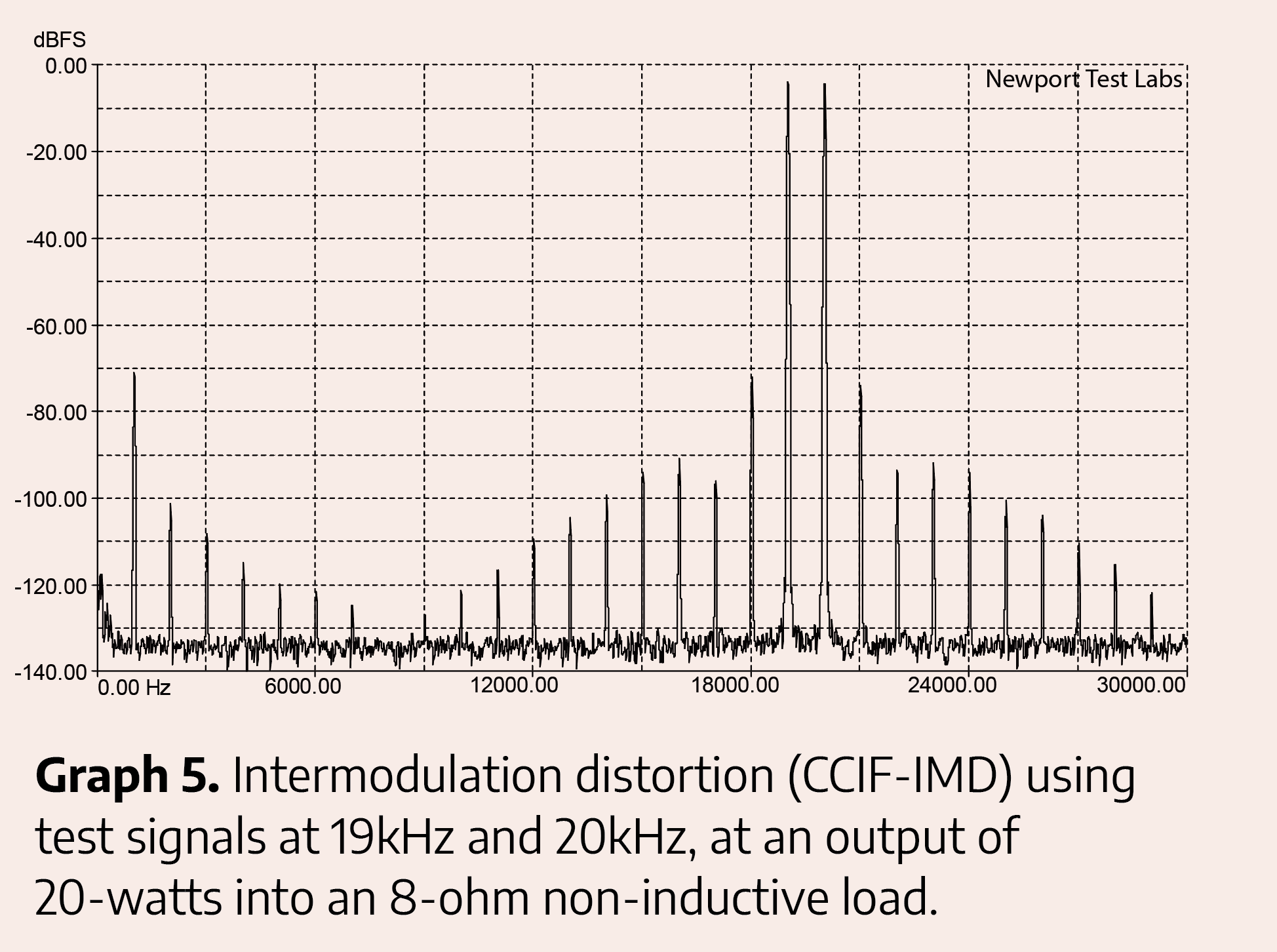
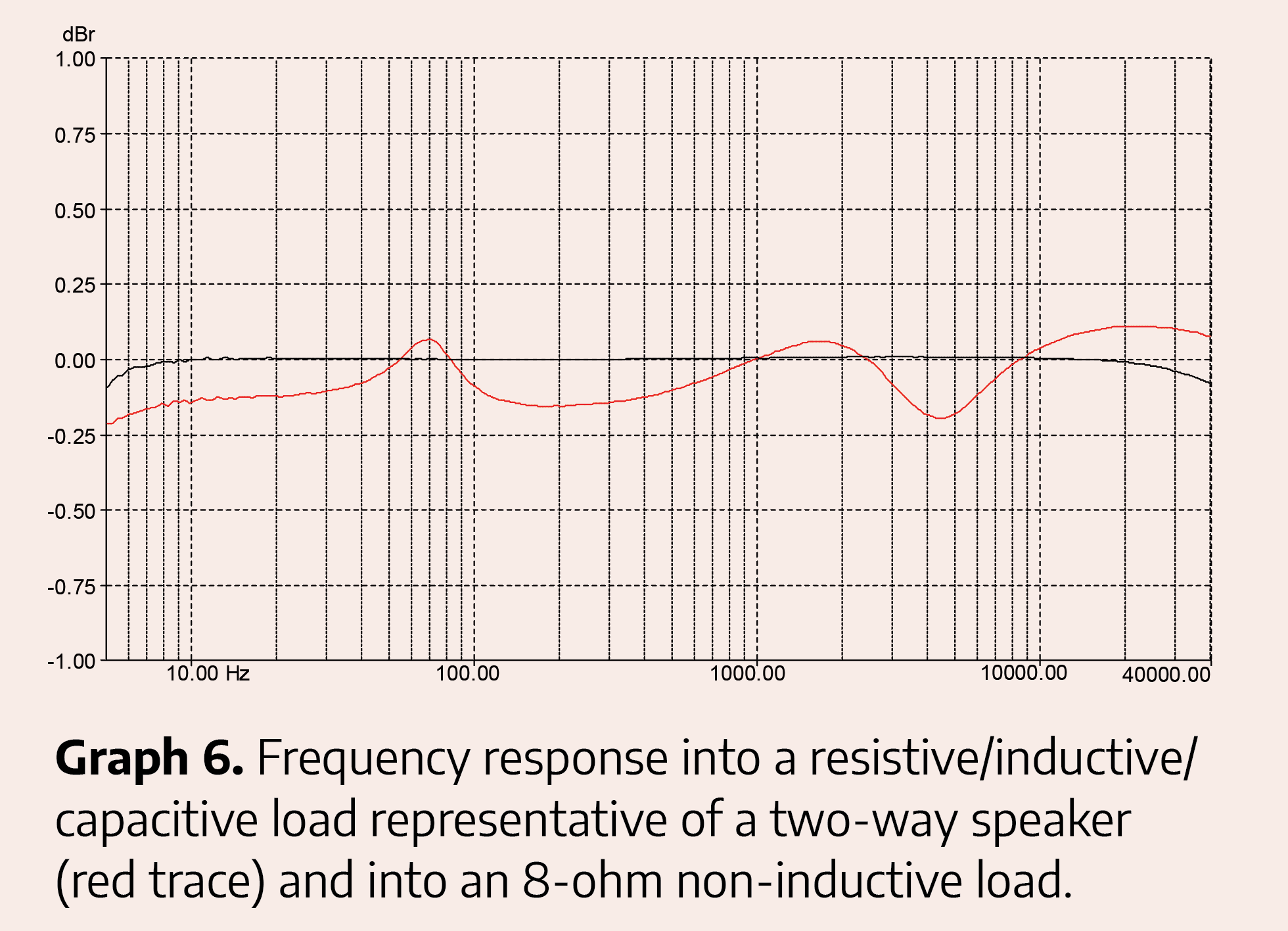
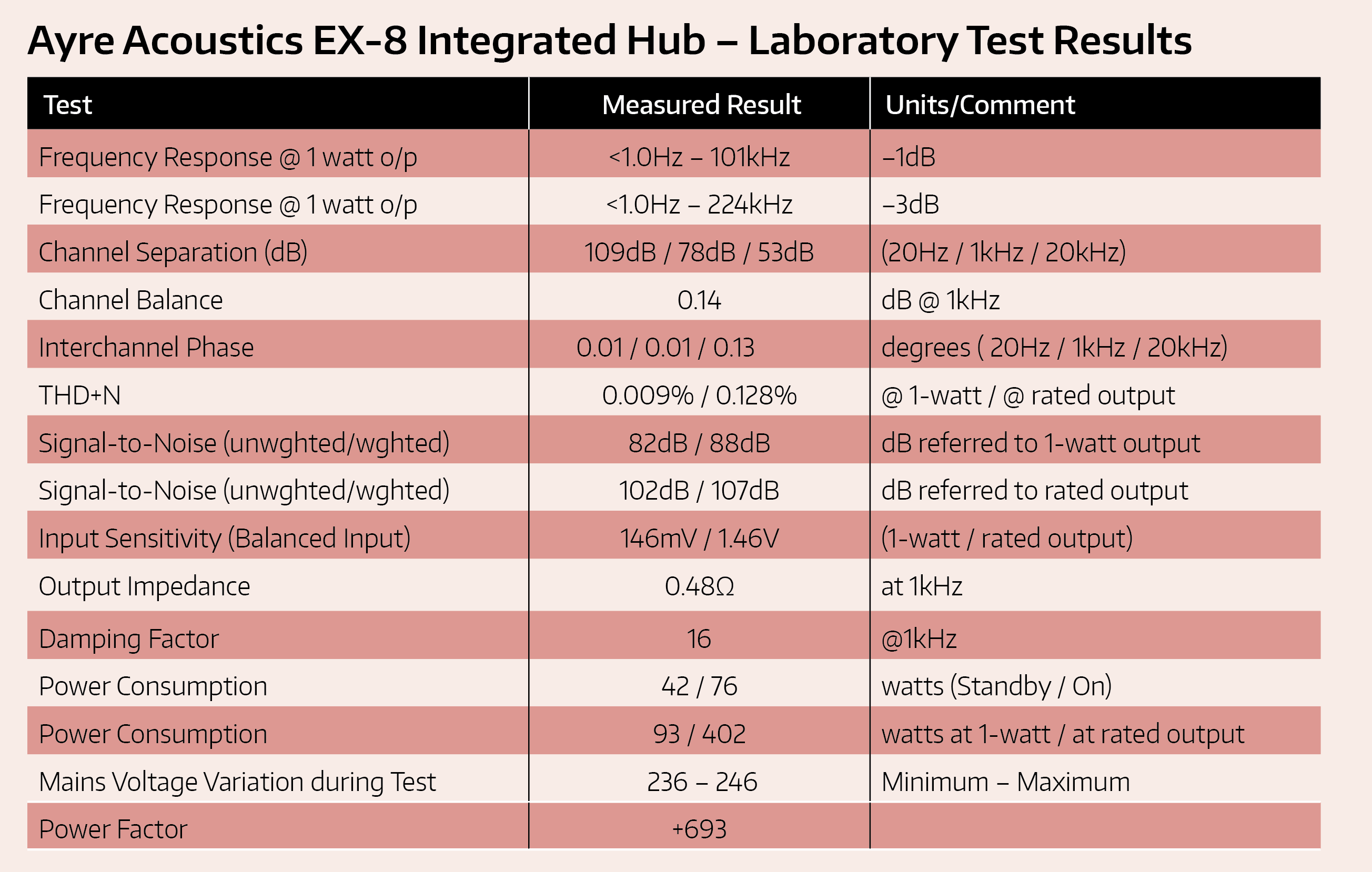

Newport Test Labs measured the power output of the Ayre EX-8 at 1kHz, both channels driven into 8Ω, as being 100-watts continuous per channel, exactly on specification.
Power at the frequency extremes dropped a little below this, by 0.5dB to 93-watts at 20Hz and at 20kHz. The single-channel output results were slightly higher, and more uniform, suggesting the slightly lower power figures at the frequency extremes are due to the Ayre EX-8’s power supply. This would seem to be borne out by the testresults into the lower, 4Ω impedance, where the Ayre returned a test result of 125-watts per channel, both channels driven… not quite the increase in power I’d usually expect into the lower impedance load.
Frequency response, as measured by Newport Test Labs, was very linear as well as extremely extended, with the lab measuring <1Hz to 101kHz –1dB and <1Hz to 224kHz –3dB, so the normalised response was <1Hz to 224kHz ±1.5dB. The Ayre EX-8’s frequency response across the audio band is shown in Graph 6. The black trace shows the frequency response into a non-inductive 8Ω precision high-power resistor and you can see that between 20Hz and 20kHz, it basically tracks the graph line, so is superbly flat.
Below 20Hz there’s a slight roll-off to be 0.05dB down at 5Hz and 40kHz (the graphing limits for this particular test). This puts the normalised audio-band frequency response at 5Hz to 40kHz ±0.025dB. The red trace shows the Ayre EX-8’s frequency response when it’s driving a load that’s representative of a typical two-way loudspeaker system. (Essentially this circuit is one originally developed by Ken Kantor and modified by John Atkinson, the schematic for which can be found here: www.tinyurl.com/sim-ls-load) Although it’s not nearly so flat, you need to consider the vertical scale of the graph, which is just a quarter of a dB per division, so even into this load, the Ayre EX-8’s frequency response is still a truly excellent 5Hz to 40kHz ±0.12dB.
Channel separation was outstanding at low frequencies (109dB), good at mid-frequencies (78dB) and more than required at high frequencies (53dB), though I’d like to see better results at these high frequencies, even though they wouldd not be audible. Channel balance was 0.14dB, which is good, particularly considering the balanced nature of the circuitry. Inter-channel phase accuracy was also good, as you can see from the tabulated figures.
Distortion was low enough that it will be inaudible but a little higher than usual due to the use of a balanced output stage. (Essentially, the balanced output stage means that the audio signal is passing through two identical amplifiers so distortion must inevitably be twice as high as if it were passing through only one of them.) It’s also lower into 8Ω loads than into 4Ω loads which, again, is exactly as theory would predict.
Looking at Graph 1 (1-watt output into 8Ω) you can see a second harmonic at –80dB (0.01%), a third at –63dB (0.0707%), a fourth at –100dB (0.001%), and a fifth at –92dB (0.0025%). The four higher-order harmonics visible further to the right are all more than 110dB down (0.0003%). Into a 4Ω load at the same 1-watt output, the levels of the first five harmonic components are almost identical to those produced when the amplifier is driving 8Ω, but the levels of the higher-order harmonics are higher and additional harmonics are also added. Increasing the power output to 20-watts per channels sees the distortion levels increase further—as would be expected—and additional higher-order harmonics added. However even at these levels distortion is still too low to be audible as distortion. Looking at Graph 3 we can see a second harmonic at –72dB (0.0251%), then a third at –77dB (0.0141%), a fourth at –96dB (0.0015%), and a fifth at –88dB (0.0039%).
Above this, apart from 7th and 9th components both down at around –81dB (0.0089%), all other distortion components are more than 90dB down (0.003%) and most more than 100dB down (0.001%).
Across all graphs you can see that the noise floor of the Ayre EX-8 is ‘way low, down more than 120dB relative to 1-watt and nearly 140dB relative to 20-watts. This performance is reflected by the overall wideband signal-to-noise ratios measured by Newport Test Labs of 82dB unweighted relative to 1-watt (improving to 88dB with IHF-A-weighting) and 102dB unweighted relative to rated output, improving to 109dB A-weighted.
Output impedance was high (again partly due to the balanced output configuration), at a measured 0.48Ω at 1kHz. This is the reason for the response variations in the red trace of Graph 6, but also means a relatively low damping factor of 16, which would be more typical of a valve amplifier than a solid-state amplifier. Input sensitivity was 146mV for 1-watt out (balanced or unbalanced inputs) and 1.46V for rated output, which puts overall voltage gain at 25.7dB which is on the low side for an integrated amplifier and also suggests that the balanced input might not be differential.
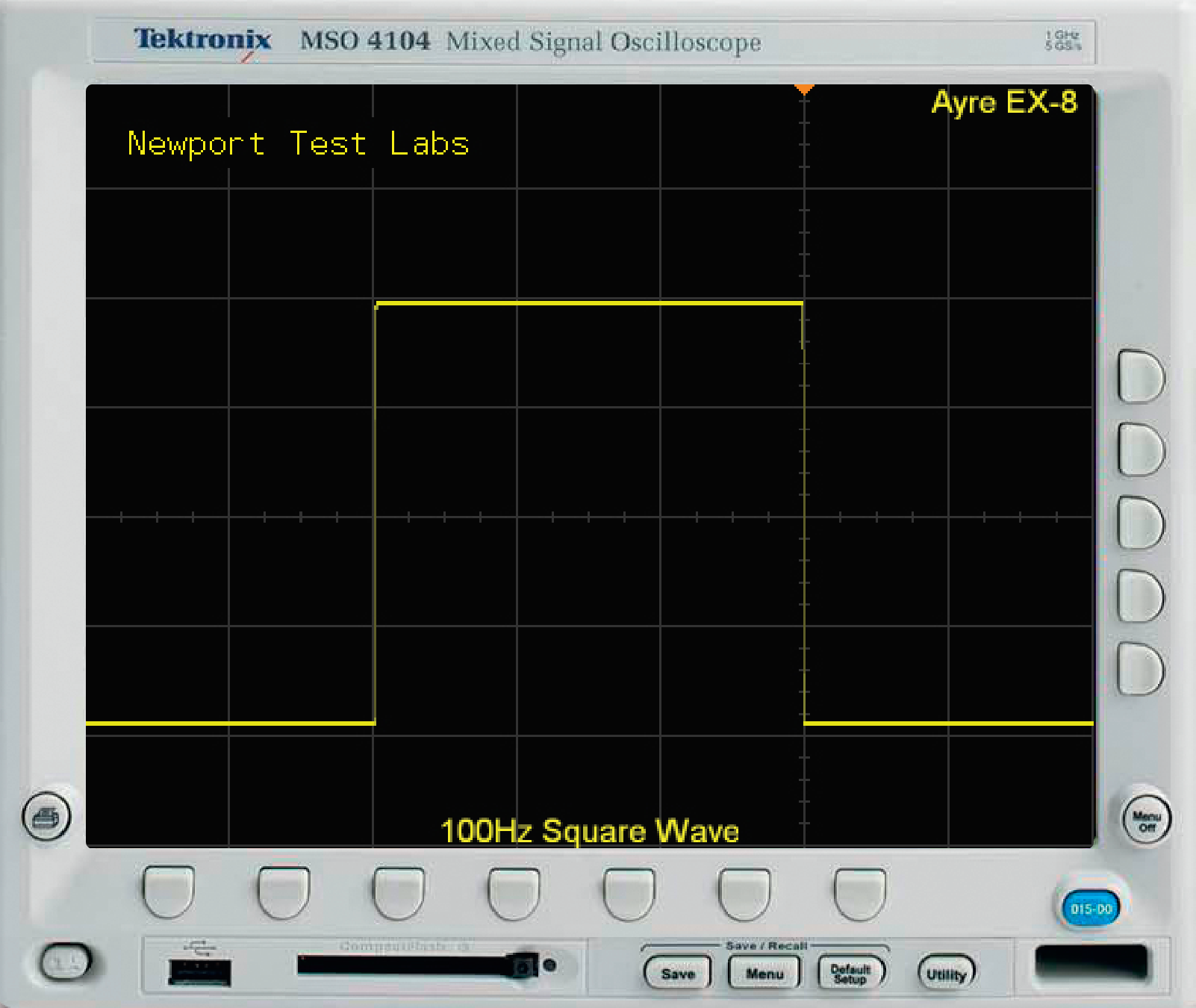
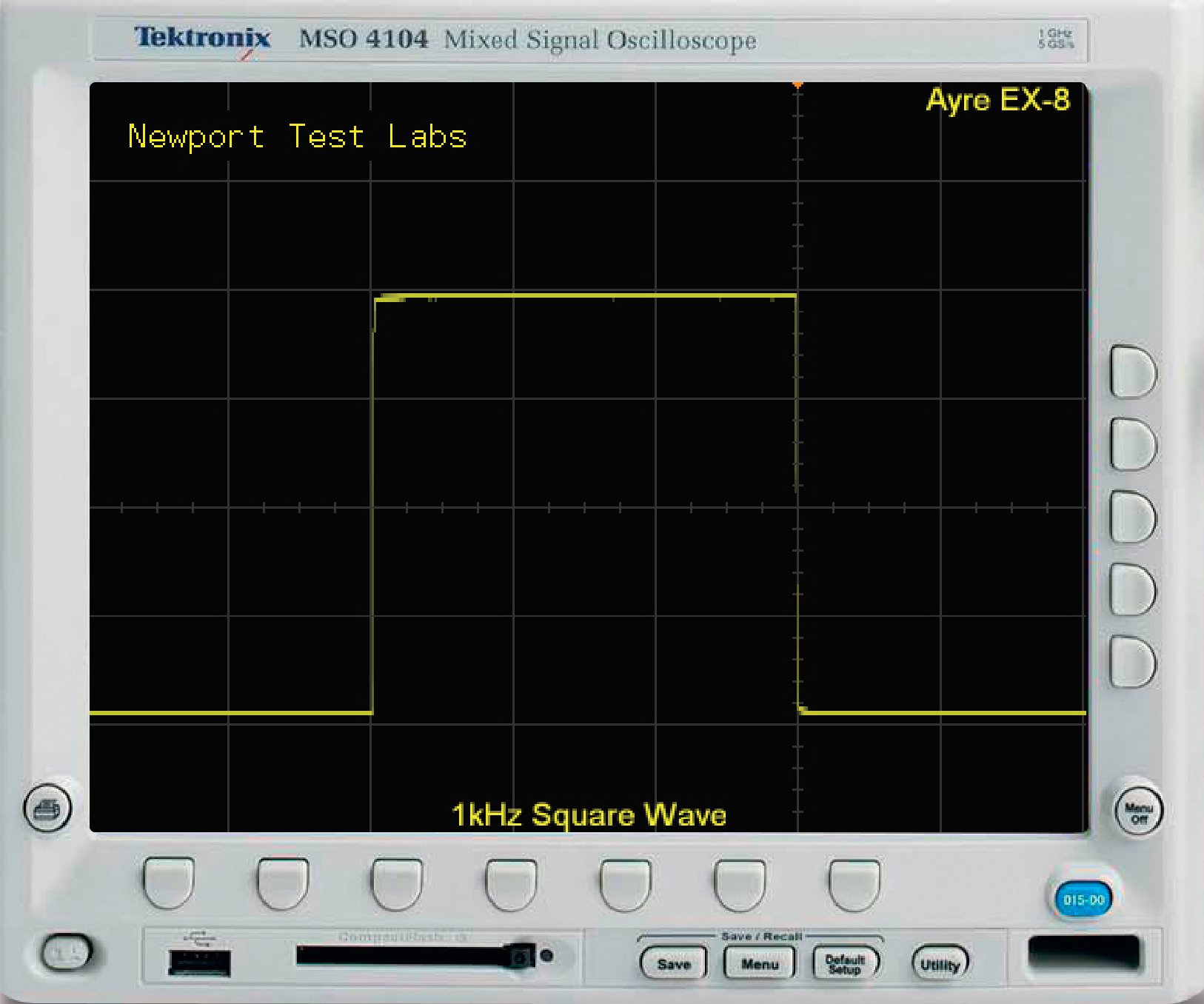
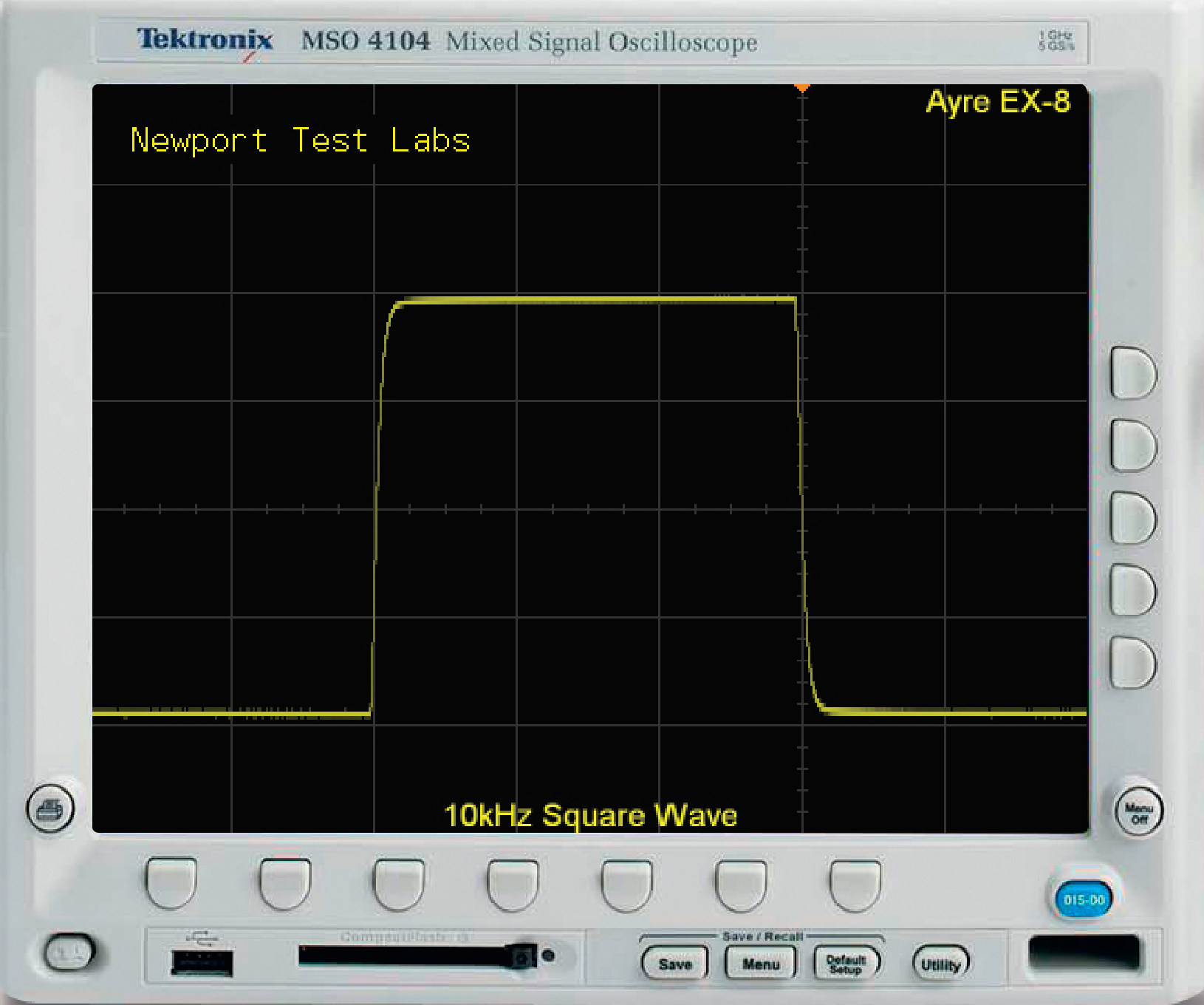
The Ayre EX-8’s performance when reproducing square waves was outstandingly good. The 100Hz square wave is excellent, with no tilt at all and none of the bending that, if present, would have indicated phase shift. The 1kHz square wave is almost a replica of the test signal. The 10kHz square wave was far ‘squarer’ than I usually see from amplifiers at this frequency, with only a very slight rounding on the leading edge. Performance into a capacitive load was equally exemplary, with the waveform showing a very slight 25 per cent overshoot that is completely damped within two cycles. This shows that the amplifier is unconditionally stable and also able to drive complex reactive loads including electrostatic speakers.
Standby power consumption was inexplicably high, at 42-watts, so I’d suggest actually turning the amplifier off whenever you’re not using it. The fact that the EX-8 runs so hot (>50°C) means that it will come up to operating temperature very fast, so you’ll get maximal performance soon enough.
Overall the Ayre EX-8 Integrated Hub performed very well on Newport Test Labs’ test bench, though the results do indicate that you will get best performance from it if you to use loudspeakers with a nominal impedance of at least 8Ω and connect them using short lengths of low-resistance cable.
Australian Hi-Fi is one of What Hi-Fi?’s sister titles from Down Under and Australia’s longest-running and most successful hi-fi magazines, having been in continuous publication since 1969. Now edited by What Hi-Fi?'s Becky Roberts, every issue is packed with authoritative reviews of hi-fi equipment ranging from portables to state-of-the-art audiophile systems (and everything in between), information on new product launches, and ‘how-to’ articles to help you get the best quality sound for your home. Click here for more information about Australian Hi-Fi, including links to buy individual digital editions and details on how best to subscribe.
